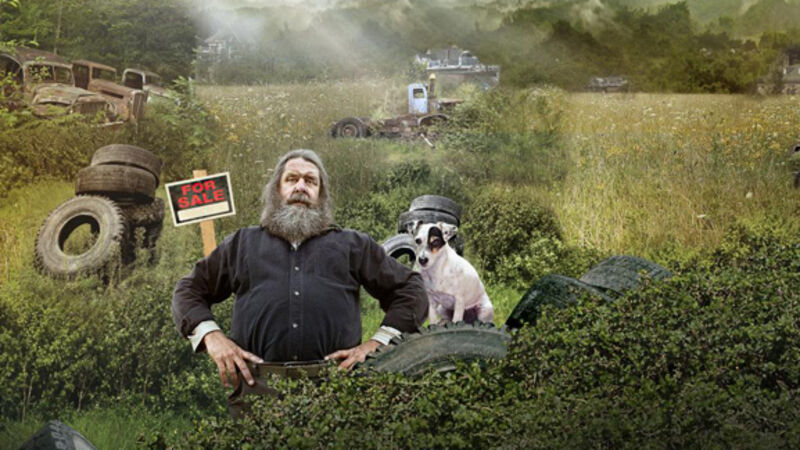Vintage view: History Channel’s Down East Dickering

My two favourite collecting shows on television despite their geographical oddities, are two state-side offerings.
American Pickers, when it first aired on the History Channel was completely overwhelmed by the goofy whoops of antique archaeologist Mike Wolf, and the grave and extremely boring, obsessive behaviour of his companion, Frank Fritz.
However, as their irresistible Tennessee enthusiasm glowed through the weeks with steady on-camera experience, it has proven to be an affectionate insight into the barn-hoarding madness of much of Middle America.
A more recent arrival, again from the History Channel, is the delightful vintage exploits of the rebellious, bearded-buddies of Down East Dickering. This is a charming record of a simple idyll — middle-aged, off-grid living in rural Maine with Tony and his satellite group of laid back friends.
Turtle the enigmatic one, Yummy the ladies’ man and the mechanical genii Cliff, Speedy, Tinman, and others who live week to week from the pages of Uncle Henry’s Almanac.
This is a sort of DoneDeal style classified bible of the great and grotty on offer down every shaggy lane of the state. ‘Dickering’ is a term for what we would call the haggle. What unites the two shows is the regular appearance of vintage commercial signage retrieved from shadowy outbuildings.
Most coveted of all are the rolled iron signs, coated in enamel, which despite nibbles and bites of rust, and the buckshot of many casual assaults, retain their eye-grabbing colours, shapes and subject matter.
Porcelain or enamel signs originated in Germany at the turn of the last century. The foundries rolled out a piece of sheet iron, pressing it thinly and coating the otherwise vulnerable metal with chips of glass.
Fabulous, durable colours could be fired into life while protecting the strong but easily oxidised metal beneath.
When iron became as desirable as gold during the Second World War, the processes and materials were abandoned in favour of painted steel or tin covered with a silkscreened design that could be filled in for colour.
By the 1950s most indoor advertising was in cardboard. Some signs for gasoline, goods, agricultural products or public information were double-sided as they were intended for hanging — swinging from a support or wall mounted, making them a prime target for stones and bullets.
In American signage, it’s these double sided, early porcelain survivors that draw the eye of wealthy collectors keen for some authentic textural edge on their sleek home surroundings. Enamelled tin signs turn up regularly in Ireland, and with familiar themes from smoking to stout — but it’s vital to recognise the reproduction from the real.
Sadly, most signs in good condition are likely to be screen printed replicas made for the pub trade as by-the-yard, wall-fillers.
With a few year’s abuse (polite nibbles of rust are always present), it can be hard to recognise something 10 years old, compared to something 70 years old, glamourising the health-giving properties of cigarettes.
If the signage seems too good to be true, is highly illustrative, and has no provenance from the dealer or a fully descriptive receipt to back up his word — walk away.
A private seller may not know what they have on their hands, but if it’s pulled from the back of a shed in a tangle of mid-century tools, you could be onto a winner.
Don’t overlook more modest tin signs in attractive but simple scripts likely to have hung outside the local shops that sold everything from pipe tobacco to milk pans.
Genuine larger signs in outwardly very rough condition, but with good colour and an instantly recognisable nostalgia brand such as Players, Shell Oil, Lyons Tea, Fry’s Cream etc, can command as much as €300, even snowing rust.
These fragile oldies are best stabilised with a light shake to remove paint flakes, left in their original condition, and enjoyed for their accrued history.
Look out for cardboard signs without tears or bowing to the board, storing or displaying out of direct sunlight to ensure the longevity of the printed inks.
Above all, don’t forget to get down and dicker!












